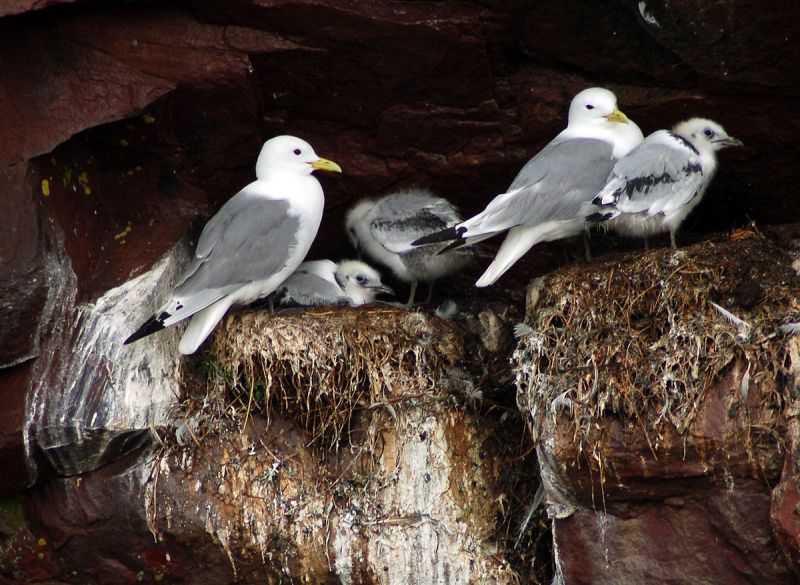
On a birding trip to Newfoundland, “The Rock”
35 million seabirds nest in the province of Newfoundland & Labrador. On The Rock alone there are 7 million Leach’s storm-petrels, half a million Atlantic puffins and perhaps a million others. Here are two species that breed in Atlantic Canada but not as far south as the U.S. east coast.
Black-legged kittiwake (Rissa tridactyla):
These small pelagic members of the gull family range across the northern oceans. In Europe they’re just called “kittiwakes” because they’re the only species, but North America has red-legged kittiwakes (Rissa brevirostris) on Alaska’s Pribilof Islands so we make a distinction.
Black-legged kittiwakes nest in noisy colonies on sheer cliffs, shown above and below. The young certainly don’t walk off the nest!
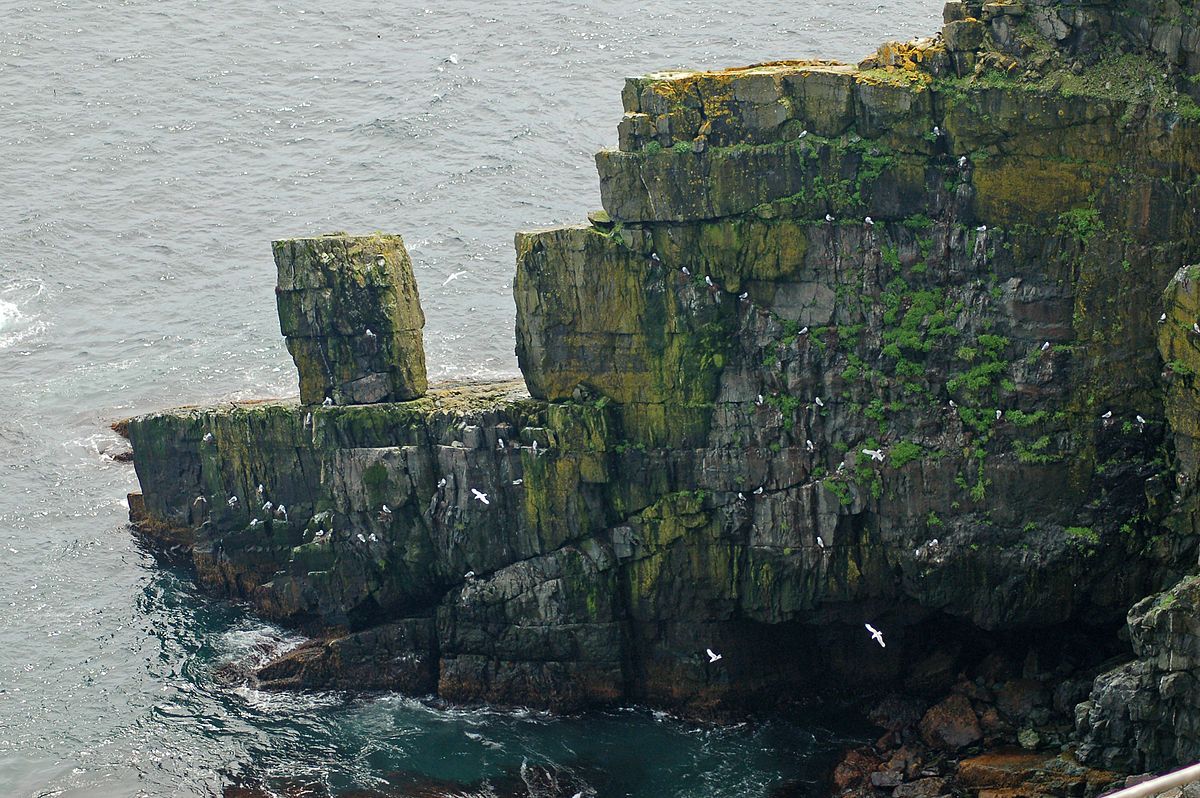
At the colonies, the birds say their names over and over: “kit-ti-waake, kit-ti-wa-aake” (Xeno Canto XC118116 recording by Magnus Bergsson in Iceland)
Black-legged kittiwakes are well studied because it’s easy to see their nests and monitor their success. Sometimes they even nest on man-made structures instead of cliffs.
Their global population is now 14.6 to 15.7 million birds but they are declining across Europe at the rate of more than 40% over three generations. The IUCN has listed them as globally Vulnerable to extinction.
Common murre (Uria aalge):
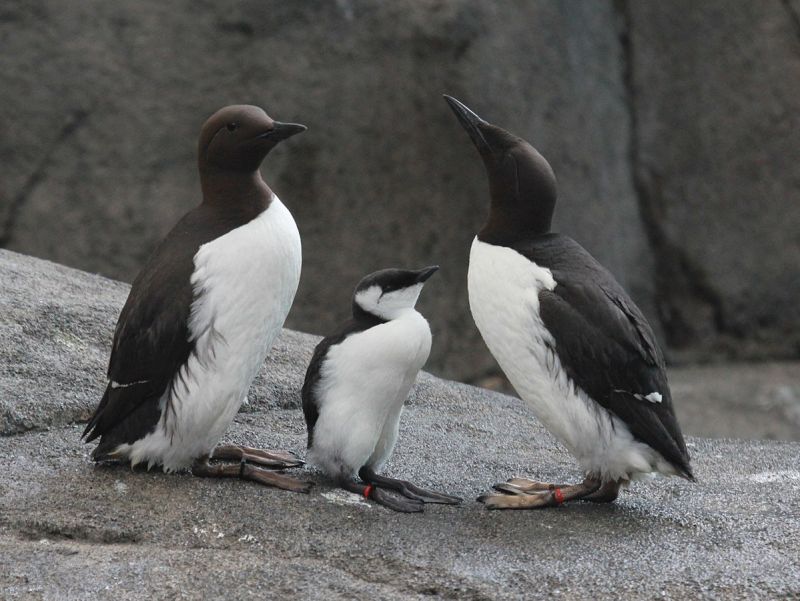
Murres resemble penguins but they’re not. They are auks, related to the extinct great auk (Pinguinus impennis) who’s memorialized by a statue on Newfoundland’s Fogo Island.
Murres never build nests. The female lays one egg in a slight depression on bare rock and the parents incubate for about 30 days. In large colonies the adults stand tightly packed, so close that they’re almost shoulder to shoulder.
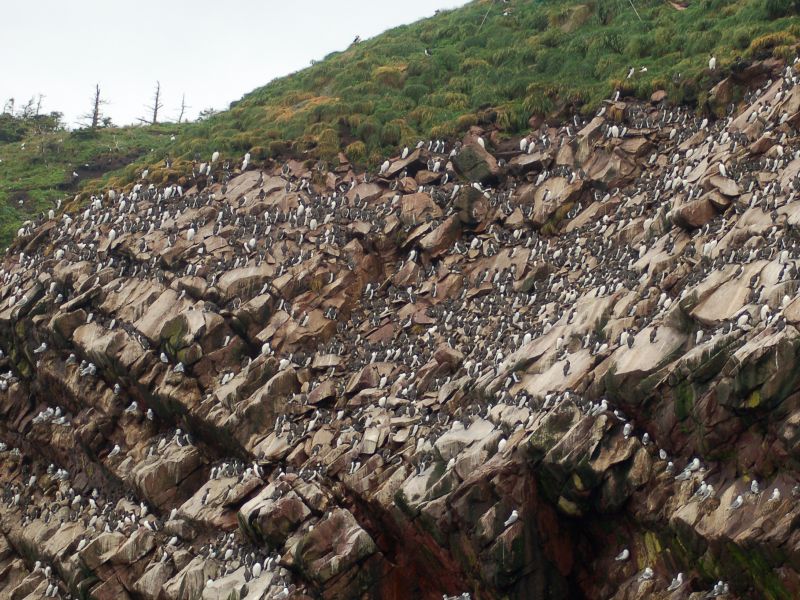
Murre eggs are unusually pointy at one end. They roll in a circle and not off the cliff.
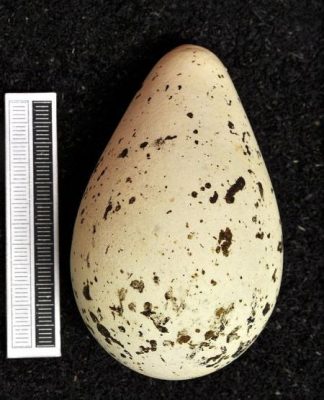
When murre chicks are 20 days old they leave the nest. Though they cannot fly they flutter off the cliff and down to the sea.
Common and thick-billed murres (Uria lomvia) both nest on Newfoundland and they look very similar. Will I ever be able to tell them apart?
(photos from Wikimedia Commons; click on the images to see the originals. audio from Xeno Canto; see caption for link to the original)
Day 3, July 10: Morning at La Manche Trail, afternoon to Trepassey